#Birds of Manhattan
Text















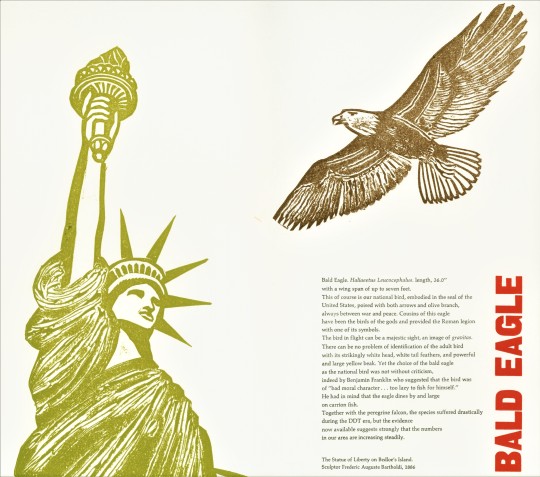
A Big Apple Feathursday
These collagraph prints by American artist, educator, and printer John Ross (1921-1917), made for the 1998 Birds of Manhattan, depict a few of the more common birds of that island against various architectural features of the city. It's sometimes easy to forget how biodiverse Manhattan is, particularly in bird life. Manhattan lies on the eastern route of the Atlantic flyway, so it receives many visitors as well as serving as a year-round residence for many species of birds.
The book, another donation form the estate of our late friend Dennis Bayuzick, was conceived, designed, illustrated and printed in an edition of 40 copies by John Ross at his East Hampton, New York High Tide Press in collaboration with relief aid officer and Greek and Latin scholar Lloyd Jonnes, who wrote the text. The binding, with its inset painted relief of a Cardinal, is by James D. Marcantonio at his Hope Bindery in Providence, R.I. This book was selected for the 1998 “50 Books / 50 Covers” by the American Institute for Graphic Arts in New York.
View another post on work by John Ross.
View more Feathursday posts.
#Feathursday#John Ross#Birds of Manhattan#collagraphs#High Tide Press#Lloyd Jonnes#James D. Marcantonio#Hope Bindery#Herring Gull#Rock Dove#Northern Cardinal#Barn Swallow#House Sparrow#Screech Owl#Peregrine Falcon#European Starling#Downy Woodpecker#American Crow#Great Blue Heron#Canada Goose#Bald Eagle#House Wren#birds#birbs!
259 notes
·
View notes
Text

Angelic Titmouse at Tupelo meadow ,Central park.
493 notes
·
View notes
Text


Story - (ノ◕ヮ◕)ノ*:・゚✧YAY ✧゚・: *ヽ(◕ヮ◕ヽ)
#SOME GOOD NEWS!!!!!#Christian Cooper#bird watching#central park#national geographic#manhattan#amy cooper
10K notes
·
View notes
Text

#everyone look at him#american woodcock#bird#birding#birbs#mine#best day ever seeing this guy out and about in manhattan ;-;
170 notes
·
View notes
Text
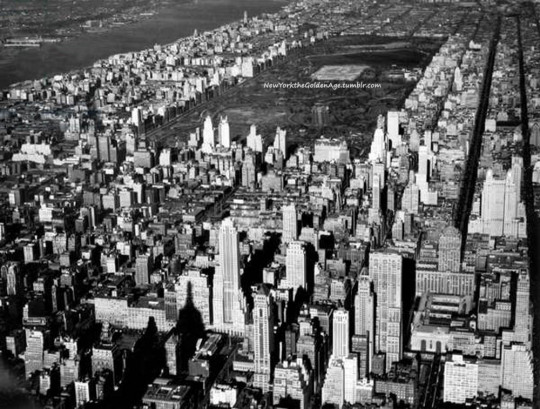
Aerial view of Central Park and surroundings, ca. 1926.
Photo: Underwood Archives/UIG /Bridgeman Images
#vintage New York#1920s#aerial view#NYC#vintage NYC#Central Park#Manhattan skyline#skyscrapers#birds-eye view
125 notes
·
View notes
Note
Just saw Oppenheimer and I was a bit disappointed with how they portrayed Truman. He came across pretty poorly IMO. It was only one scene but I wondered what you thought.
I understand your disappointment and it certainly wasn't a very in-depth portrayal of Truman, but according to the book that the movie was largely based on -- American Prometheus: The Triumph and Tragedy of J. Robert Oppenheimer by Kai Bird and Martin J. Sherwin (BOOK | KINDLE | AUDIO) -- the meeting that Oppenheimer had with President Truman went down pretty much as depicted in the film.
As Bird and Sherwin write in American Prometheus:
(O)n October 25, 1945, Oppenheimer was ushered into the Oval Office. President Truman was naturally curious to meet the celebrated physicist, whom he knew by reputation to be an eloquent and charismatic figure. After being introduced by Secretary [of War Robert P.] Patterson, the only other individual in the room, the three men sat down. By one account, Truman opened the conversation by asking for Oppenheimer's help in getting Congress to pass the May-Johnson bill, giving the Army permanent control over atomic energy. "The first thing is to define the national problem," Truman said, "then the international." Oppenheimer let an uncomfortably long silence pass and then said, haltingly, "Perhaps it would be best first to define the international problem." He meant, of course, that the first imperative was to stop the spread of these weapons by placing international controls over all atomic technology. At one point in their conversation, Truman suddenly asked him to guess when the Russians would develop their own atomic bomb. When Oppie replied that he did not know, Truman confidently said he knew the answer: "Never."
For Oppenheimer, such foolishness was proof of Truman's limitations. The "incomprehension it showed just knocked the heart out of him," recalled Willie Higinbotham. As for Truman, a man who compensated for his insecurities with calculated displays of decisiveness, Oppenheimer seemed maddeningly tentative, obscure -- and cheerless. Finally, sensing that the President was not comprehending the deadly urgency of his message, Oppenheimer nervously wrung his hands and uttered another of those regrettable remarks that he characteristically made under pressure. "Mr. President," he said quietly, "I feel I have blood on my hands."
The comment angered Truman. He later informed David Lilienthal, "I told him the blood was on my hands -- to let me worry about that." But over the years, Truman embellished the story. By one account, he replied, "Never mind, it'll all come out in the wash." In yet another version, he pulled his handkerchief from his breast pocket and offered it to Oppenheimer, saying, "Well, here, would you like to wipe your hands?"
An awkward silence followed this exchange, and then Truman stood up to signal that the meeting was over. The two men shook hands, and Truman reportedly said, "Don't worry, we're going to work something out, and you're going to help us."
Afterwards, the President was heard to mutter, "Blood on his hands, dammit, he hasn't half as much blood on his hands as I have. You just don't go around bellyaching about it." He later told [Secretary of State] Dean Acheson, "I don't want to see that son-of-a-bitch in this office ever again." Even in May 1946, the encounter still vivid in his mind, he wrote Acheson and described Oppenheimer as a "cry-baby scientist" who had come to "my office some five or six months ago and spent most of his time wringing his hands and telling me they had blood on them because of the discovery of atomic energy."
#Oppenheimer#History#Oppenheimer Film#J. Robert Oppenheimer#Harry S. Truman#President Truman#Truman Administration#Atomic Bomb#Manhattan Project#Trinity Test#Oppenheimer Movie#Christopher Nolan#Cillian Murphy#Gary Oldman#American Prometheus#American Prometheus: The Triumph and Tragedy of J. Robert Oppenheimer#Kai Bird#Martin J. Sherwin#Nuclear Weapons#World War II
77 notes
·
View notes
Text
Pigeons
L1120597

View On WordPress
#everybodystreet#Life_On_The_Street#birds#L1120597#Leica CL#Manhattan#New York City#raw streets#street#street candid#street photography#urban life
49 notes
·
View notes
Text
'The key word in Christopher Nolan’s “Oppenheimer” is “compartmentalization.” It’s a security strategy, introduced and repeatedly enforced by Col. Leslie R. Groves (Matt Damon) in his capacity as director of the Manhattan Project, which is racing to build a weapon mighty enough to bring World War II to an end. In Groves’ mind, keeping his various teams walled off from one another will help ensure the strictest secrecy. But J. Robert Oppenheimer (Cillian Murphy), the brilliant theoretical physicist he’s hired to run the project laboratory in Los Alamos, N.M., knows that compartmentalization has its limits. The success of their mission will hinge not on isolation but on an extraordinary collaborative synthesis — of physics and chemistry, theory and practice, science and the military, the professional and the personal.
In the weeks since “Oppenheimer” opened to much critical acclaim and commercial success, Groves’ key word has taken on an unsettling new meaning. Compartmentalization, after all, is a pretty good synonym for rationalization, the act of setting aside, or even tucking away, whatever we find morally troubling. And for its toughest critics, many of them interviewed for a recent Times piece by Emily Zemler, “Oppenheimer” compartmentalizes to an outrageous degree: In not depicting the atomic bombings of Hiroshima and Nagasaki, they argue, the movie submits to a historical blindness that it risks passing on to its audience. Nolan, known for crafting fastidiously well-organized narratives in which nothing appears by accident, has been taken to task for what he chooses not to show.
Most of those decisions, of course, flow directly from his source material, “American Prometheus,” Kai Bird and Martin J. Sherwin’s authoritative 2005 Oppenheimer biography. With the exception of one key narrative thread, everything onscreen is framed, per biopic convention, through its subject’s eyes. And so you see Oppenheimer as an excitable young physics student, and you behold his eerie, captivating visions of the subatomic world. You see him become one of America’s leading physicists, take a major role in the secret race to the A-bomb and, together with his recruits, devise and build the world’s first nuclear weapons. You see his shock and awe when the Trinity test proves successful, lighting up the desert sky and landscape with a blinding flash of white and a 40,000-foot pillar of fire and smoke.
What you don’t see — because Oppenheimer doesn’t see them either — are the bomb’s first victims: the thousands of New Mexicans, most of them Native American and Hispanic, who dwell within a 50-mile radius of the Trinity test site and whose exposure to radiation will have deadly health consequences for generations. You don’t see the bombs being dropped on Hiroshima and Nagasaki; you don’t see the lethal conflagrations and ash-covered rubble, and you don’t see the bodies of Japanese victims burned beyond recognition, or hear the screams and wails of survivors. (Estimates place the eventual death toll at close to 200,000.)
In refusing to visualize these horrors, is Nolan showing admirable dramatic restraint or committing unforgivable sins of omission? Is he merely sticking to his subject’s perspective or conveniently dodging the kind of imagery that would trouble Oppenheimer’s conscience?
As it happens, the scientist does in fact see that imagery, and his conscience is duly troubled. In one key scene, the camera studies Oppenheimer and his colleagues as they watch disturbing footage of the bombings’ aftermath. An offscreen speaker describes how thousands of Japanese civilians were incinerated in an instant, while thousands more died excruciating deaths from radiation poisoning. You see Oppenheimer recoil, even if what he recoils from is left pointedly out of frame.
These are not the only images of WWII that the movie withholds. It’s a measure of the formal and structural rigor of “Oppenheimer” that we see nothing of the Pacific theater conflict, and nothing of the European theater conflict, either — not even when Oppenheimer fears that the Nazis might be building a nuclear weapon of their own. Nolan, who always trusts us to keep up with his elaborately constructed puzzle-box narratives, also trusts us to know a thing or two about history. And crucially, he wants to open up a different perspective on the war, to show how some of its most crucial tactics and maneuvers played out not on battlefields but in classrooms and laboratories — and, finally, in the theater of Oppenheimer’s mind.
We are sometimes told, in matters of art and storytelling, that depiction is not endorsement; we are not reminded nearly as often that omission is not erasure.
It’s a brilliant mind, to say the least. It’s also ill prepared for the terrifying, world-altering reality that it ushers into being. Oppenheimer may see footage of Hiroshima and Nagasaki, but images are a poor substitute for reality; he will never walk among the ruins, witness the despair of the survivors or behold the devastation up close. Nolan knows that we can’t either. What’s more, he clearly believes that we shouldn’t be able to.
Seen in this light, the director’s refusal to thrust his camera onto Japanese soil, far from being an act of historical vagueness or obliviousness, instead represents a carefully thought-out, rigorously executed solution to the problem of how to represent history. And his solution speaks not to his insensitivity but his integrity, his refusal to exploit or trivialize Japanese suffering by re-enacting it for the camera. Nolan lays the groundwork in one of his most revealing scenes, shortly before the decision is made to target Hiroshima and Nagasaki. As Oppenheimer looks on, U.S. Secretary of War Henry L. Stimson (James Remar) removes Kyoto from the list of potential targets, citing the city’s cultural and historical significance and fondly recalling that he and his wife honeymooned there years earlier.
Before the bombings have even taken place, Nolan, in this one scene, indicts the arbitrary callousness of a U.S. war machine that cloaks its destructive intentions in cultural high-mindedness and rank sentimentality. It’s an appalling moment, and Stimson unambiguously solicits Oppenheimer’s contempt as well as the viewer’s; watch that scene in a packed house and you’ll hear the audience scoff as one. You might also begin to suspect, if you haven’t already, that Nolan isn’t going to dramatize the bombings in straightforward fashion, if he means to dramatize them at all.
Nolan has never been turned on by spectacles of violence. Even “Dunkirk,” a harrowing if ultimately optimistic World War II bookend of sorts to “Oppenheimer’s” apocalyptic despair, is a combat picture far more driven by ideas than by carnage. Violence certainly plays its part in Nolan’s movies, but seldom is it an end in itself. Reviewing “Oppenheimer” in the New York Times, Manohla Dargis noted, “There are no documentary images of the dead or panoramas of cities in ashes, decisions that read as [Nolan’s] ethical absolutes.” And in a recent Decider essay, the critic Glenn Kenny shrewdly examined “Oppenheimer” alongside Alain Resnais’ elliptical 1959 masterpiece, “Hiroshima Mon Amour,” itself a powerful commentary on the futility of trying to represent the unrepresentable. “Had Nolan chosen to somehow ‘recreate’ the bombing of Hiroshima,” Kenny writes, “we, the viewers, would really see nothing.”
Japanese filmmakers, of course, have been powerfully evoking and re-creating the bombings for decades: Kaneto Shindo’s “Children of Hiroshima” (1952) and especially Shohei Imamura’s devastating “Black Rain” (1989) are just two well-known examples. Over the past few weeks, social media users have circulated clips of Mori Masaki’s 1983 anime “Barefoot Gen,” an adaptation of Keiji Nakazawa’s manga series of the same title. It contains what is surely one of the cinema’s most upsetting, unsparingly graphic depictions of the atomic blast and its casualties. It’s one of several animated films, including Renzo and Sayoko Kinoshita’s 1978 short “Pica-don” and Sunao Katabuchi’s “In This Corner of the World” (2016), that have confronted the destruction of Hiroshima and Nagasaki with a boldness and artistry that live-action cinema can be hard-pressed to match.
Much of this evidence has been marshaled in Nolan’s defense: Surely this is Japan’s story to tell, not his. I’m reluctant to embrace that particular stay-in-your-lane logic, which is ultimately deadening to the cause of art and empathy. As Clint Eastwood demonstrated in “Letters From Iwo Jima,” it is not beyond a white Hollywood filmmaker’s ability to enter persuasively and movingly into the mindset of a wartime enemy. Even so, that clearly isn’t the story Nolan is telling. And with such a wealth and variety of Japanese fiction and nonfiction filmmaking on the atomic bombings already, why should “Oppenheimer” bear the responsibility of representing events and experiences that fall outside its subject’s perspective?
Some would rebut that “Oppenheimer,” being a Hollywood blockbuster with serious global reach (whether it will play Japanese theaters remains uncertain), will be many audiences’ only exposure to the events in question and thus might “create a limit on public consciousness and concern,” as the poet, writer and professor Brandon Shimoda told The Times. A corollary of this argument: The crimes committed against the people of Hiroshima and Nagasaki were so unspeakable, so outsized in their impact, that Oppenheimer’s perspective does and should dwindle into insignificance by comparison. For Nolan to focus so exclusively on an American physicist’s story, some insist, ultimately diminishes history and humanity, even as it reinforces the Hollywood hegemony of the great-man biopic and of white men’s narratives in general.
I get those complaints. I also think they betray an inherent disrespect for the audience’s intelligence and curiosity, as well as a fundamental misunderstanding of how movies operate. It’s telling that few of these criticisms of perspective were leveled at “American Prometheus” when it was published in 2005, that no one begrudged Bird and Sherwin for offering a meticulously researched, morally ambivalent portrait of their subject’s life and consigning the destruction of two Japanese cities to a few pages. That’s because books are books, the argument goes, and movies are movies — and this perceived difference, it must be said, reveals a pernicious double standard.
Because they seldom achieve the narrative penetration and richness of detail of, say, a 700-page biography, movies, especially those about history, often are hailed as achievements of breadth over depth, emotion over intellect. They are assumed to be fundamentally shallow experiences, distillations of real life rather than sharply angled explorations of it, propelled by broad brushstrokes and easy expository shortcuts, and beholden to the audience’s presumably voracious appetite for thrilling, traumatizing spectacle. And because movies offer a visual immediacy and narrative immersion that books don’t, they are expected to be sweeping if not omniscient in their narrative scope, to reach for a comprehensive, even definitive vantage.
Movies that attempt something different, that recognize that less can indeed be more, are thus easily taken to task. “It’s so subjective!” and “It omits a crucial P.O.V.!” are assumed to be substantive criticisms rather than essentially value-neutral statements. We are sometimes told, in matters of art and storytelling, that depiction is not endorsement; we are not reminded nearly as often that omission is not erasure. But because viewers of course cannot be trusted to know any history or muster any empathy on their own — and if anything unites those who criticize “Oppenheimer” on representational grounds, it’s their reflexive assumption of the audience’s stupidity — anything that isn’t explicitly shown onscreen is denigrated as a dodge or an oversight, rather than a carefully considered decision.
A film like “Oppenheimer” offers a welcome challenge to these assumptions. Like nearly all Nolan’s movies, from “Memento” to “Dunkirk,” it’s a crafty exercise in radical subjectivity and narrative misdirection, in which the most significant subjects — lost memories, lost time, lost loves — often are invisible and all the more powerful for it. We can certainly imagine a version of “Oppenheimer” that tossed in a few startling but desultory minutes of Japanese destruction footage. Such a version might have flirted with kitsch, but it might well have satisfied the representational completists in the audience. It also would have reduced Hiroshima and Nagasaki to a piddling afterthought; Nolan treats them instead as a profound absence, an indictment by silence.
That’s true even in one of the movie’s most powerful and contested sequences. Not long after news of Hiroshima’s destruction arrives, Oppenheimer gives a would-be-triumphant speech to a euphoric Los Alamos crowd, only for his words to turn to dust in his mouth. For a moment, Nolan abandons realism altogether — but not, crucially, Oppenheimer’s perspective — to embrace a hallucinatory horror-movie expressionism. A piercing scream erupts in the crowd; a woman’s face crumples and flutters, like a paper mask about to disintegrate. The crowd is there and then suddenly, with much sonic rumbling, image blurring and an obliterating flash of white light, it is not.
For “Oppenheimer’s” detractors, this sequence constitutes its most grievous act of erasure: Even in the movie’s one evocation of nuclear disaster, the true victims have been obscured and whitewashed. The absence of Japanese faces and bodies in these visions is indeed striking. It’s also consistent with Nolan’s strict representational parameters, and it produces a tension, even a contradiction, that the movie wants us to recognize and wrestle with. Is Oppenheimer trying (and failing) to imagine the hundreds of thousands of Japanese civilians murdered by the weapon he devised? Or is he envisioning some hypothetical doomsday scenario still to come?
I think the answer is a blur of both, and also something more: In this moment, one of the movie’s most abstract, Nolan advances a longer view of his protagonist’s history and his future. Oppenheimer’s blindness to Japanese victims and survivors foreshadows his own stubborn inability to confront the consequences of his actions in years to come. He will speak out against nuclear weaponry, but he will never apologize for the atomic bombings of Japan — not even when he visits Tokyo and Osaka in 1960 and is questioned by a reporter about his perspective now. “I do not think coming to Japan changed my sense of anguish about my part in this whole piece of history,” he will respond. “Nor has it fully made me regret my responsibility for the technical success of the enterprise.”
Talk about compartmentalization. That episode, by the way, doesn’t find its way into “Oppenheimer,” which knows better than to offer itself up as the last word on anything. To the end, Nolan trusts us to seek out and think about history for ourselves. If we elect not to, that’s on us.'
#Christopher Nolan#Oppenheimer#Leslie Groves#Matt Damon#Cillian Murphy#Los Alamos#The Manhattan Project#Hiroshima#Nagasaki#American Prometheus#Kai Bird#Martin J. Sherwin#Hiroshima Mon Amour#Dunkirk#Letters from Iwo Jima#Clint Eastwood
20 notes
·
View notes
Text

7 notes
·
View notes
Text
Happy Birthday Lady Liberty 🗽




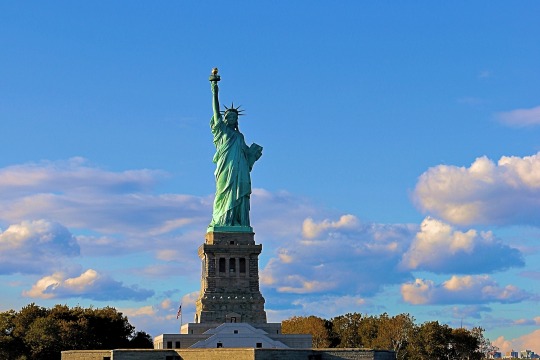

#Gull#Statue of Liberty National Monument#Liberty Birthday#Ellis Island and Liberty Island#Liberty Island#Cruise Ship#Birds Flying#Statue of Liberty#Ellis Island#Jersey City#New Jersey#Cloudysky#Ocean#Wildlife#Seabirds#Atlantic Ocean#New York Harbor#Birds#Ferries#Boat#Sailboat#Skyscrapers#Manhattan#Skyline#New York City#Battery Park#The Battery#New York
9 notes
·
View notes
Text

manhattan
3 notes
·
View notes
Text
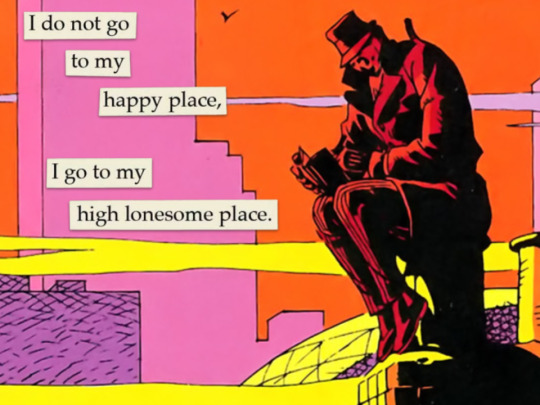




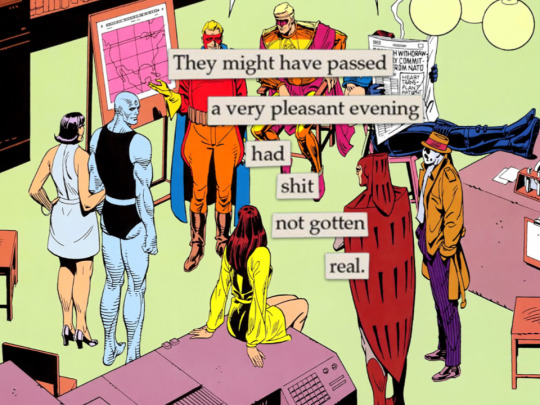
watchmen as troubled birds (pt. 1)
108 notes
·
View notes
Text

male bufflehead at the central park reservoir!
#bird#birds#birding#birdwatching#new york city#manhattan#central park#wildlife#wildlifephotography#photography#bird photography#urban wildlife
21 notes
·
View notes
Text

Looking northeast from the Empire State Building observation deck at dusk sometime in the 1980s.
90 notes
·
View notes
Text

Spread your wings (Brooklyn Bridge flight) - New York City - By Andreas Komodromos
#brooklyn bridge#manhatttan#brooklyn#manhattan#city#nyc#cityscape#new york#travel#urban#new york city#nyandreas#architecture#skyline#skyscraper#east river#seagull#bird#tumblrphoto#original tumblr photographers#photographers on tumblr#color photography#original photography on tumblr
13 notes
·
View notes
